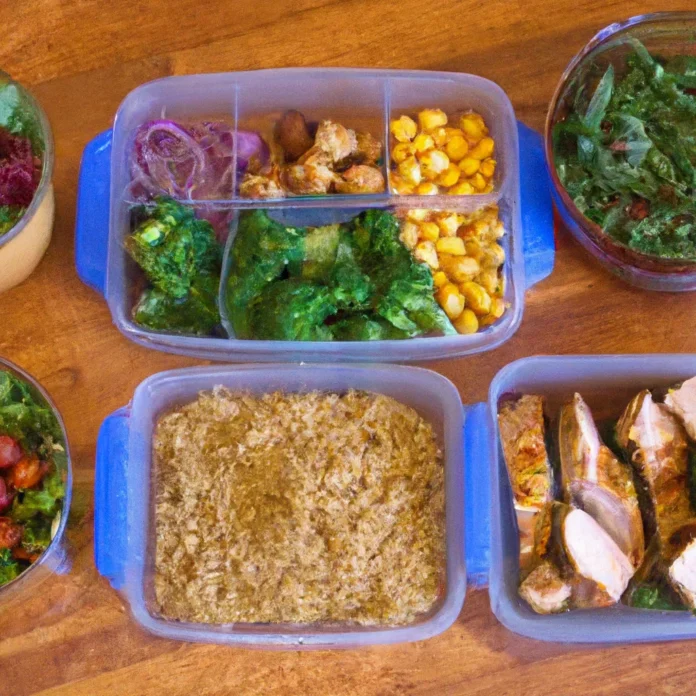How to Create a High-Protein Meal Plan for Fat Loss
In today’s health-conscious world, high-protein meal plans have garnered significant attention, especially for those aiming for effective fat loss. Protein plays a pivotal role in weight management and overall health, making it essential to understand how to integrate it into your daily meals effectively. This article will provide a comprehensive guide on crafting a high-protein meal plan tailored for fat loss, ensuring you get the right nutrients without compromising on taste or satisfaction.
Understanding the Role of Protein in Weight Loss
Protein is a macronutrient that is vital for numerous bodily functions, including muscle repair and growth, immune function, and hormone production. When it comes to fat loss, protein is particularly beneficial for several reasons:
- Satiety: High-protein foods help you feel fuller for longer, reducing overall calorie intake.
- Thermic Effect: The body burns more calories digesting protein compared to fats and carbohydrates.
- Muscle Retention: Adequate protein intake helps preserve lean muscle mass during weight loss.
Setting Your Protein Goals
Determining the right amount of protein for your meal plan is crucial. Generally, a daily intake of 1.6 to 2.2 grams of protein per kilogram of body weight is recommended for those aiming to lose fat while maintaining muscle mass. For example, a person weighing 70 kg should aim for 112 to 154 grams of protein per day. However, individual needs can vary based on factors like activity level, age, and metabolic rate.
Components of a High-Protein Meal Plan
Creating a high-protein meal plan involves selecting the right foods, balancing macronutrients, and planning meals for variety and enjoyment. Here’s a detailed breakdown:
1. Protein Sources
When crafting your meal plan, choose from a range of protein-rich foods:
- Animal-Based Sources:
- Chicken breast
- Turkey
- Fish (salmon, tuna, tilapia)
- Eggs
- Dairy (Greek yogurt, cottage cheese)
- Plant-Based Sources:
- Legumes (lentils, chickpeas, black beans)
- Tofu and tempeh
- Quinoa
- Edamame
- Nuts and seeds (almonds, chia seeds, hemp seeds)
2. Balancing Other Macronutrients
A successful meal plan should also include healthy fats and carbohydrates:
- Healthy Fats: Incorporate sources such as avocados, olive oil, nuts, and seeds. These fats support overall health and help with nutrient absorption.
- Complex Carbohydrates: Focus on whole grains, fruits, and vegetables. These provide essential vitamins and minerals, as well as fiber to aid digestion.
3. Meal Timing and Frequency
Consider how often you eat throughout the day. Many find success with three main meals and two snacks. This approach helps maintain energy levels and prevent overeating. Here’s a sample distribution:
- Breakfast: 25% of daily protein needs
- Lunch: 35% of daily protein needs
- Dinner: 30% of daily protein needs
- Snacks: 10% of daily protein needs
Sample High-Protein Meal Plan
Below is a one-day high-protein meal plan designed for fat loss that incorporates the principles discussed:
Breakfast
- 3 scrambled eggs with spinach and tomatoes
- 1 slice of whole-grain toast
- 1 cup of Greek yogurt with berries
Mid-Morning Snack
- 1 protein shake (whey or plant-based)
- Handful of almonds
Lunch
- Grilled chicken breast (150g)
- Quinoa salad with mixed vegetables
- 1 tablespoon of olive oil dressing
Afternoon Snack
- Carrot and cucumber sticks with hummus
Dinner
- Baked salmon (150g)
- Steamed broccoli and brown rice
Evening Snack
- 1 cup of cottage cheese with pineapple
Tips for Sticking to Your Plan
Consistency is key when it comes to any meal plan. Here are some strategies to help you stay on track:
- Meal Prep: Prepare meals in advance to avoid last-minute unhealthy choices.
- Stay Hydrated: Drinking plenty of water can help control hunger and support metabolism.
- Listen to Your Body: Pay attention to hunger cues and adjust portion sizes as needed.
- Keep it Interesting: Experiment with different recipes and cooking methods to avoid monotony.
“A high-protein diet is a powerful tool in achieving your weight loss goals.”
Supplementing Your Diet
While whole foods should be the foundation of your high-protein meal plan, supplements can play a supporting role. High-quality protein powders can be a convenient way to increase protein intake, especially post-workout or when on the go. We recommend exploring options from MyProtein, known for their diverse range of protein supplements.
Buy Myprotein products at MyProtein and take your nutrition to the next level!
Conclusion
Creating a high-protein meal plan for fat loss is an effective strategy for achieving your health goals. By understanding the importance of protein, selecting the right sources, and balancing your macronutrients, you can develop a sustainable eating pattern that promotes fat loss while supporting overall health. Remember to stay consistent, listen to your body, and enjoy the process. For more health and lifestyle tips, visit News Box.

